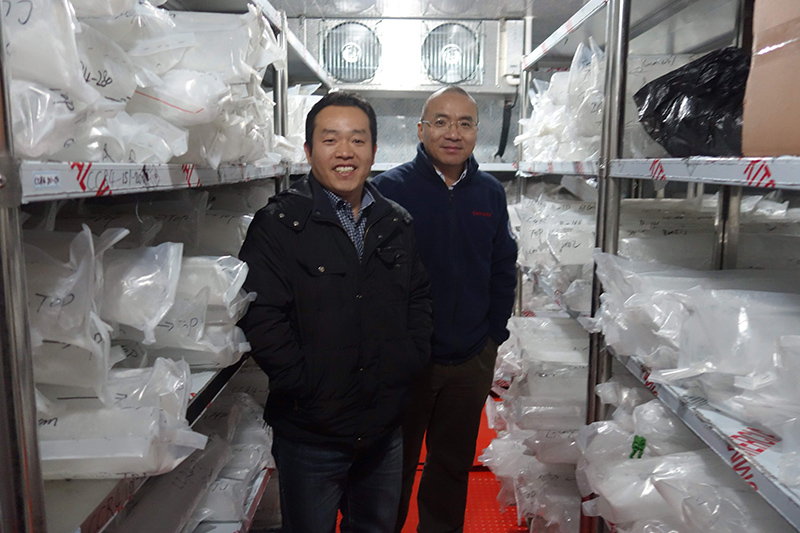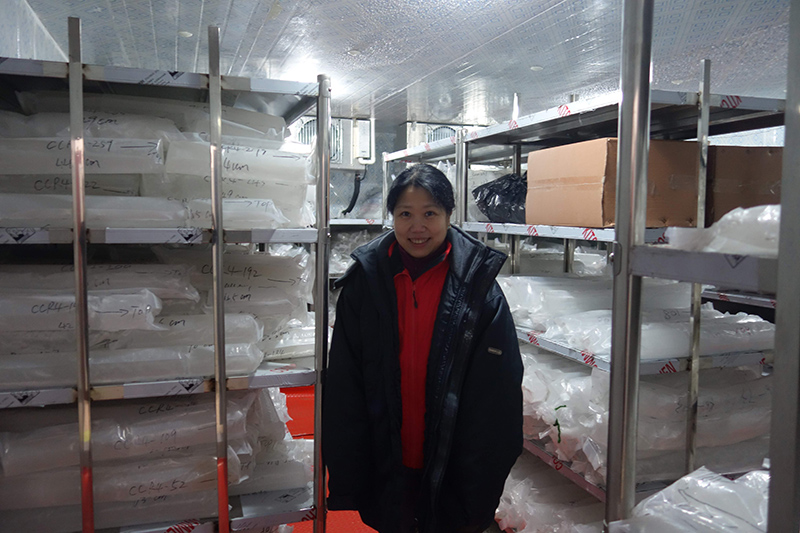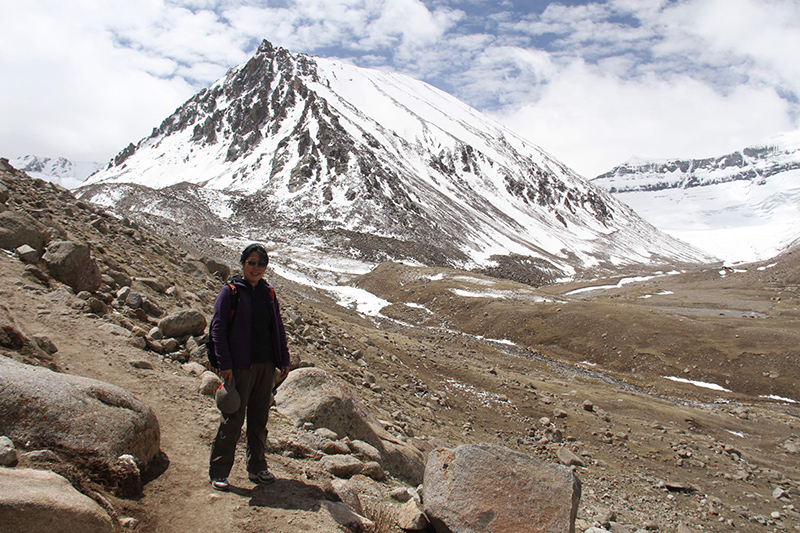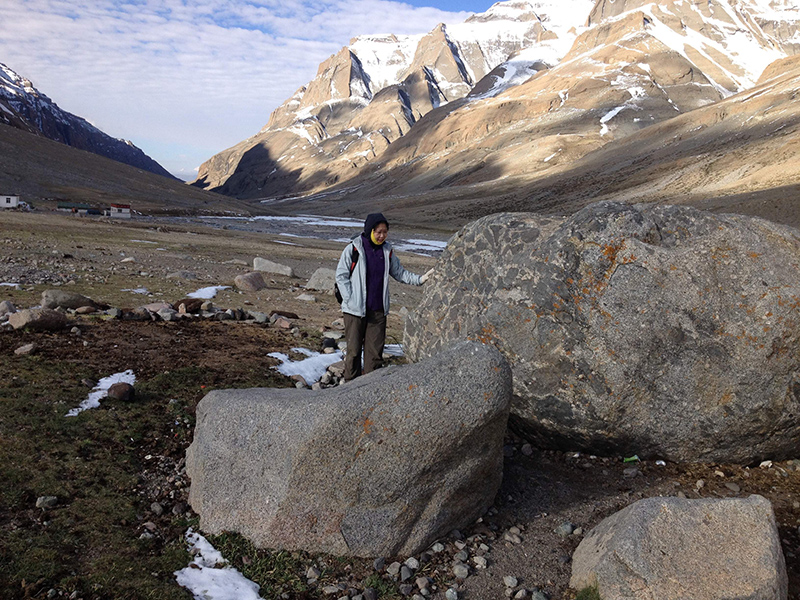College of Arts and Sciences Newsroom
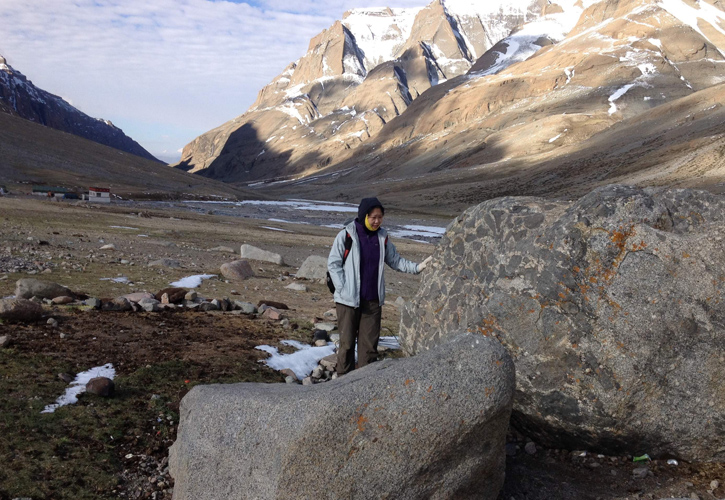
Predicting Glacier Reduction
University of Dayton climatologist Shuang-Ye Wu is collaborating with colleagues at China’s Nanjing University to study the impact of climate change on Tibetan glaciers with a $552,620 grant from the National Natural Science Foundation of China.
Glaciers on Asia’s Tibetan plateau are important water sources for the Yangtze, Yellow and Ganges rivers, so the effects of rising temperatures on these dense ice formations could have direct impact on billions of people in China and India.
Wu, an associate professor in the Department of Geology, is a co-investigator on the grant awarded to Nanjing University, where she is affiliated as a visiting professor. The award runs from January 2019 through December 2023 and covers direct research costs, including field work in remote areas of the Tibetan plateau.
She and her partners will use both physical and data-based research methods to determine how the region’s glaciers expanded and contracted during the past 10,000 years in response to climate change. Their results could have important implications for predicting the effects of global warming in this key region.
“People know that when it is warm, glaciers will melt,” Wu said. “But the individual glaciers’ response to climate change can be very different. For example, some glaciers are more sensitive to temperature change, some are more sensitive to precipitation change, and the topography also plays a role.”
Most glaciers on the Tibetan plateau have experienced a retreating trend with rising temperatures during the past several decades — a trend that has recently accelerated. However, glaciers covering the northwest plateau are relatively stable, with some even expanding in geographic area.
Those findings are largely based on remote-sensing data and on-site observations during past decades. Little is known about the reduction of glaciers over periods of a 1,000 years or longer.
The researchers plan to drill ice cores at the thickest locations of the plateau’s four glaciers to accurately determine the ages of the glaciers at the point where their ice meets bedrock. The team also will collect glacial debris from surrounding areas previously covered by glaciers.
Wu will then use computer modeling to simulate the region’s past climate, given the known conditions during the last 10,000 years, to see if the climate model agrees with the historical data derived from the ice cores and sediment samples.
“The results will be put into future models to see, if the temperature rises, how the glaciers on the Tibetan plateau will respond,” she said. “That is going to have big implications, because the glaciers are important sources of water for a very highly populated area. It feeds the major rivers in China and India, so it is going to have very serious water resource implications for billions of people.”
The Nanjing University team will drill and collect cores and send the data to the University of Dayton campus, where Wu will do the modeling. The entire team met during December 2018 at an international conference in Washington, D.C., to develop their work plan and distribute resources, including graduate students.
Wu already has some field data to work with from a previous project in the same region that served as the foundation for the team’s current collaboration.
She credits the University of Dayton’s Global Education Seminar for helping her forge connections with the Chinese research team. The program helps send faculty to international locations to broaden their teaching and scholarship. Wu visited Nanjing University in 2012 through the program and then returned in 2015 to spend a sabbatical year there. She has since returned every summer and also hosted a Nanjing University graduate student for a semester on Dayton’s campus.
“Dr. Wu is collaborating with some of the world’s top glacial geologists and climatologists from one of China’s elite universities,” said Daniel Goldman, professor and Department of Geology chair. “This work is cross-disciplinary, well-funded by NSF China, and is helpful to her productivity and peer recognition. It also promotes the University of Dayton’s geology department as an internationally recognized group of scientists.”
In 2000, Wu received her master’s and doctoral degrees in environmental geography from the U.K.’s Cambridge University. She also holds a bachelor of science degree from Nanjing University. She joined the University of Dayton faculty in 2004 after completing three-year post-doctoral research at Pennsylvania State University and a one-year visiting assistant professor appointment at Gettysburg College.
Wu teaches courses in environmental geography, earth systems and global change, and geographic information systems. Her research interests focus on assessing potential impacts of climate change, particularly on coastal and inland flooding.
For more information, please visit the Department of Geology website.
- Dave Larsen, communication coordinator, College of Arts and Sciences

